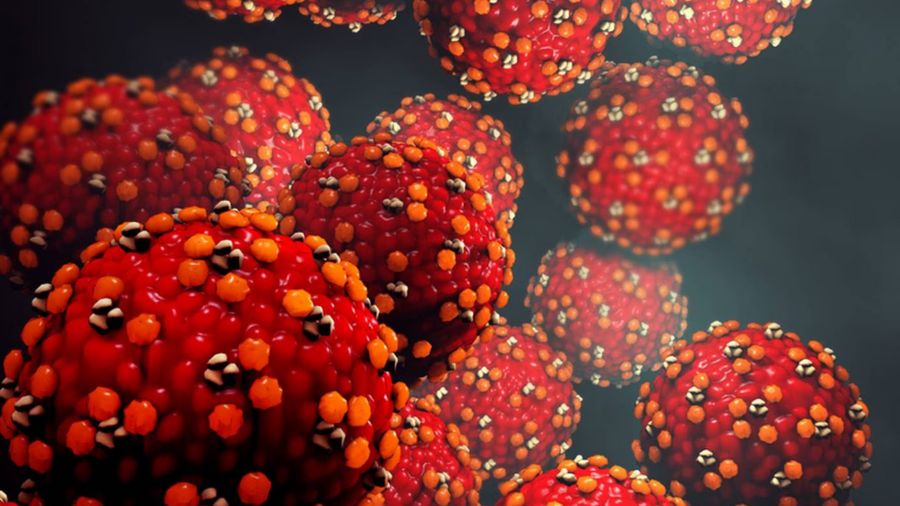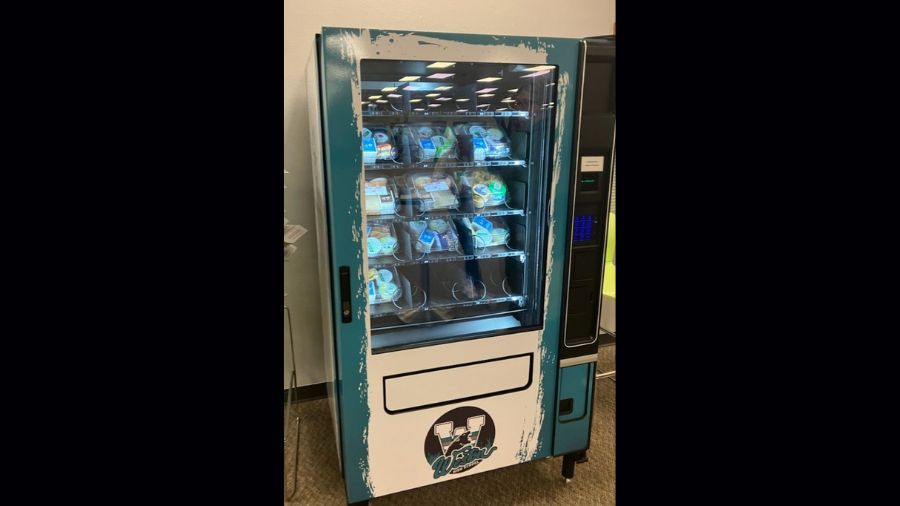Snohomish County reports zero suicides in youths in a year
Sep 3, 2021, 3:00 PM | Updated: Sep 7, 2021, 7:50 am

(Getty Images)
(Getty Images)
While many counties across the state experienced an uptick in youth suicide during remote learning at the start of the COVID-19 pandemic, one county that typically sees more than most got a pleasant surprise.
“August of 2019 to August of 2020, we actually had zero youth suicide,” said the Snohomish County Health District’s Wendy Burchill.
Suicide is preventable, and yet it is the 10th leading cause of death in the United States, and second leading cause of death for youth in Washington state. The statistics are even worse in Snohomish County, where suicide is the highest cause of death for youth ages 10-17, and the second highest cause of death for 15-24 year-olds. That’s been true since 2014, making the recent data from during the remote learning period even more interesting, and valuable.
“I’ve been doing this work for about 20 years, and we’ve never gone a whole 12 month chunk with no youth suicides. So our group met to specifically talk about that because we were like, OK, what happened during that 12 month time because we really need to look at that. We need to build on what may have happened during that time,” explained Burchill, who is also part of Snohomish County’s new Youth Suicide Prevention Task Force.
The Youth Suicide Prevention Task Force was born out of the existing Snohomish County Children’s Wellness Coalition, which has been around for several years, as the logical next step.
The Youth Suicide Prevention Task Force will work to reduce incidence of suicide and increase the mental health and resiliency of youth.
County health officials say over the years, suicide has been addressed by providing mental health services to young people who disclosed having thoughts of suicide or who exhibited behaviors that professionals, such as school counselors, identified as putting them at risk.
Unfortunately, this approach is limited in its ability to prevent suicide.
While services are critical for those who may be thinking about or who have made a suicide attempt, there are a limited number of people in the community who correctly identify youth at risk for suicide, and many barriers (including parental stigma, limited resources, or abusive homes) youth face in receiving the services that best meet their individual needs. There are also other factors, in addition to mental health, which place young people at risk for suicide. A community collaboration and public health approach to suicide prevention can address these factors and prevent youth suicides, which is the goal.
After seeing the data for the 12 months with zero youth suicides, the Youth Suicide Prevention Task Force engaged the community and young people to learn more about their experience during that time period, and to identify risk and protective aspects that can hopefully be used in the future to inform policy.
The findings are interesting.
“The first one was kids were getting more sleep. And, OK, why? Why would that be impactful? Well, there are studies that show that kids that have more sleep are more healthy, they’re more alert. They’re not affected as much by stressful incidents,” Burchill explained. “We also found they had more family and more family interaction. They got to be with their pets. Again, it sounds very basic, but having a pet is a factor for youth who struggle with their mental health.”
Some other positives from the lockdown period:
“Less juggling of commitments so they didn’t feel as overextended, less bullying because they weren’t in a school setting, more flexibility in terms of scheduling. So they had an opportunity to take ownership of when they did their schoolwork or how long they worked on their schoolwork,” Burchill said. “Actually, the youth I talked to said that was a big one for them. ‘I’m not sitting in a classroom from 7 a.m. to 2 p.m.,’ ‘I can flex when I do my work,’ ‘I sleep in a little bit.’ That was a protective factor.”
There was also less academic pressure.
“Remember all the testing was called off? There was also less distraction and chatter. When you’re in a classroom, especially if you struggle with ADD or ADHD or you have an anxiety disorder, again, you’re in a comfortable surrounding rather than in the classroom,” Burchill said.
Perhaps one of the most important protective takeaways had to do with supervision.
“What we heard in the media, ‘Well, these kids are going to be home, maybe in unhealthy environments, so that will increase their risk,’ which is true, but we know that the data tells us that when youth die by suicide, they typically do it when they’re alone,” Burchill said.
So during the early days of the pandemic, when the entire state was locked down and mom and dads were generally working from home, just having a guardian or adult present in the home may have interrupted any suicidal agendas.
“So supervision in the home, regardless of whether it’s a healthy environment or not, might have been enough to deter a youth from taking that next step of taking their life,” Burchill explained.
“It’s also about having access to lethal means. When you’ve got parents home, or somebody’s home, that’s a really big factor in preventing death by suicide,” said Liza Patchen-Short, a children’s mental health liaison for Snohomish County, who is also part of the task force.
“So there were more eyes on the kids whether or not it was a healthy home, whether or not the youth was stressed or struggled with mental health. Just that supervision piece might have been enough to prevent suicide,” Burchill added.
While those all seemed to be positives, the group also looked at additional risk factors created by the pandemic, lockdown, and remote learning.
“We acknowledge, though, that kids were stressed, that their mental health was affected because we’re all living through a pandemic. We’re not being dismissive of the fact that kids were struggling because they probably were. We just happened in our county to go 12 months without a suicide,” Burchill said.
Among the risk factors discovered:
“The whole unpredictability of everything — that’s what a lot of adults struggled with, the youth really struggle with that. They didn’t know what was going to happen the next day, or the next week, or the next month, in regard to school. So that increases their anxiety levels,” Burchill said.
She also noted that because their frontal lobe is not fully developed, young people don’t have the coping strategies that adults have.
“So now we’ve added a pandemic into the mix. So that’s really, again, kind of taxing their coping strategies,” Burchill added.
One of the scariest findings in this work was kids who just fell off the radar.
“There were a lot of the people in the group who work in schools and they said, we have students who have just completely disengaged from school, like we haven’t heard from them since school shut down and we can’t track them down. We just haven’t heard from them. So that was worrisome,” Burchill said.
Access to firearms also came into play for the risk factors.
“When home is not the safe space, that’s a risk factor that could create more trauma, that could lead to a mental health crisis or a possible suicide attempt. And then, likewise, you have increased access to firearms when you’re at home more often,” Burchill said.
It’s not clear whether any other counties in the state saw similar trends, but it’s clear not every county had the same experience.
“I work closely with my cohort in King County, and they did see a rise in youth suicide. That’s why I just thought, what’s unique in this community that kept our kids protected for that 12 months? It’s pretty amazing,” Patchen-Short said.
Patchen-Short says much of this is also about building resiliency in kids.
“We know that having one caring adult in your life makes the difference. It’s the most powerful, protective factor for kids. So that’s also our goal for this task force is to be thinking about how can we make sure that our schools have really caring adult relationships? And how can we increase mentoring? How can we make sure that adults are really well-trained and know how to talk to kids? And to ask them, are they thinking of killing themselves or hurting themselves? And how can they figure out ways to delay sort of access and pause decision making,” Patchen-Short explained.
While those are all important things to think about when it comes to suicide prevention, there is also a more proactive effort to be used.
“You can also have caring messages that adults can be giving to teens or to youth in general through emails, texts, Facebook, phone, whatever it is, so that they feel like they have somebody in their corner, and that they’re with them, just supportive to them, not demanding in any way but supportive,” she added.
Moving forward, the task force has divided things up into four main areas of focus.
- Communications and Community Engagement
- Adult Training (increasing capacity and competence for adults so they know how to respond to youth and immersion in emotional distress)
- School engagement (providing trainings, coordination, and support around policies and practices and re-entry)
- Intervention and Treatment (increasing caregiver knowledge and increasing understanding of treatment options and process)
Because Snohomish County is such a large county, they’ll focus those efforts over the next year in just two areas of the county.
“We’re going to start with Marysville and Monroe, and we’re going to be training faith leaders, coaches, school counselors, and YMCAs and Boys and Girls Club folks because they see a lot of kids. So we’re really going to help build their capacity, have common language and understanding,” Patchen-Short said. “And not only will they be able to know what to say to kids, but the next step would be with helping with safety planning, which is really important.”
What is safety planning?
“Safety planning is a best practice for youth who have already been identified as being at risk. They come up with a safety plan with a trusted adult — it doesn’t have to be a therapist. But it’s basically a plan for what is that youth going to do the next time they feel like they’re in crisis,” said Burchill, who says there are pre-printed versions available, or you can just follow the lead of the child.
“You can just kind of go with the youth and come up with one, so like, when you’re feeling stressed, are going to write in your journal? Are you going to talk to an adult? Who is your therapist? It has all that information on there,” said Patchen-Short, who says you then decide how often the youth and trusted adult will check in, whether daily, monthly, et cetera..
“So when they start thinking about hurting themselves, they have some strategy, they have a fallback, and people they can call,” Burchill added.
The Youth Suicide Prevention Task Force is made up of people from many disciplines across multiple sectors (health, media, social services, criminal justice, education, public health, crisis services) with the goal of reducing youth (ages 10-18) suicide, ideation, planning and attempts across Snohomish County.
They also plan to do this by:
- Supporting and strengthening youth suicide prevention, intervention and post-intervention efforts across the region.
- Coordinating with the Department of Health, Forefront Suicide Prevention at the University of Washington, American Foundation for Suicide Prevention, Riverside Trauma Center, and other recognized suicide prevention organizations.
- Enhancing coordination and providing targeted supports to youth and family serving sectors to maximize prevention efforts outside of the school day.
- Identifying gaps to leverage resources and globally recognized best practices.
- Providing technical assistance and training to build capacity for promoting protective factors and reducing risk factors that influence suicide through:
Trainings that develop adult comfort, competence and confidence in responding to distress; and,
Forums that promote youth voice and perspectives of those with lived experience in the mental health system. - Identifying critical policy gaps to engage with model-policy developers like the Washington State School Directors Association, Office of the Superintendent of Public Instruction, Washington State Health Care Authority and other agencies.
- Identify and address barriers to help-seeking (ex. stigma, limited resources, parental abuse, etc.).
Facts about suicide:
- Suicide is complex. There are almost always multiple causes, including mental illnesses and/or childhood trauma that may not have been recognized or treated. However, these conditions are treatable.
- Mental disorders and/or substance abuse have been found in 90% of people who have died by suicide.
- Suicide is a response to intense, emotional pain that results in feelings of hopelessness and of burdensomeness.
- Depression, anxiety, and suicidal crises are livable and survived by most who get help.
- The majority of people who survive suicide attempts report that they did not want to die, instead they did not believe there was any other way to end their pain.
With a multi-disciplinary approach and by working with community partners, the Youth Suicide Prevention Task Force aims to save the lives of our youth. Learn more about the task force.
If you or someone you know is struggling with thoughts of suicide, feelings of hopelessness, helplessness, increased stress, or feeling like a burden, reach out to talk with a counselor today:
- 24-hour local crisis line – 800-584-3578
- 24-hour chat service
- National Suicide Prevention Lifeline – 800-273-TALK (8255)













